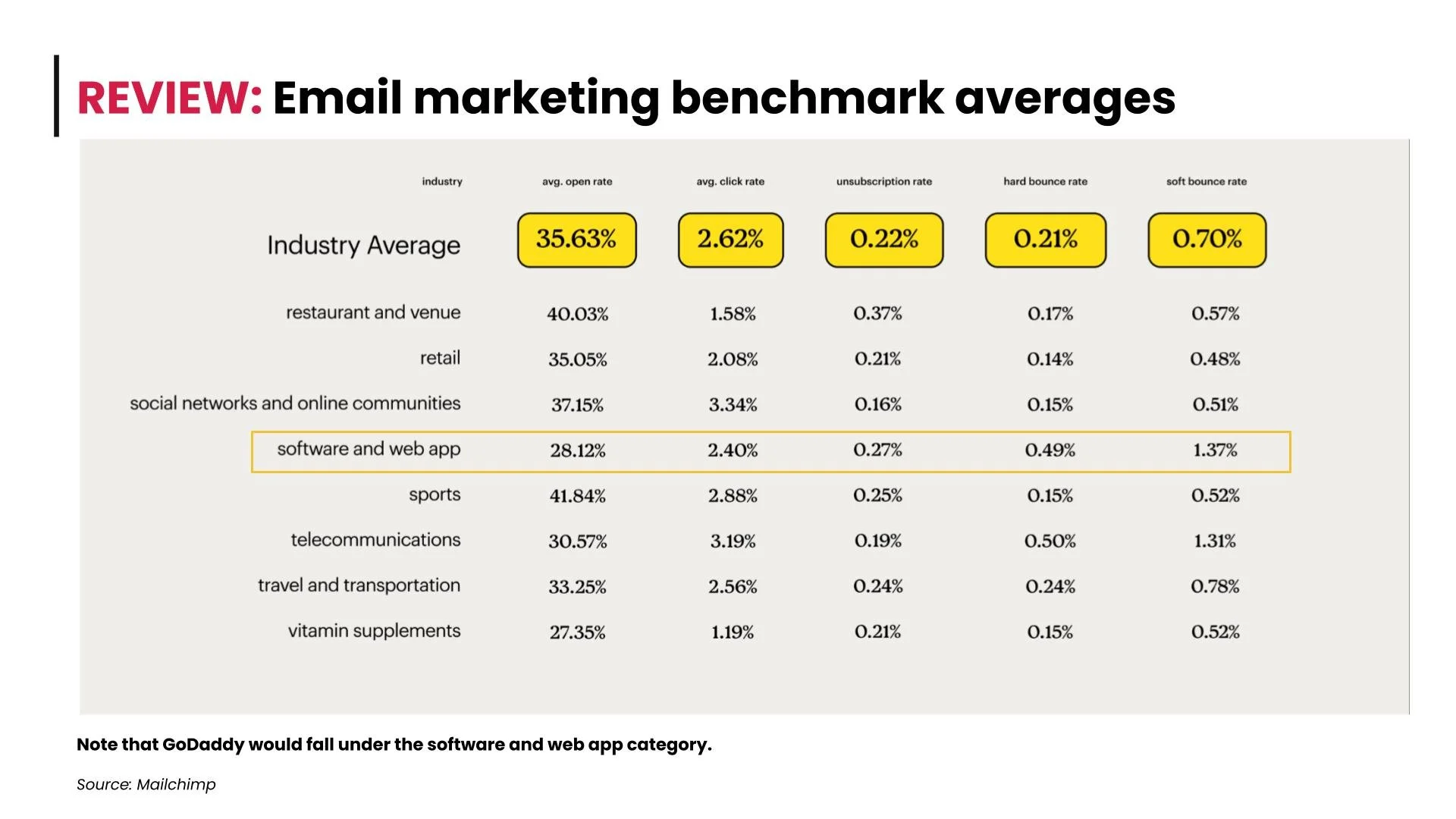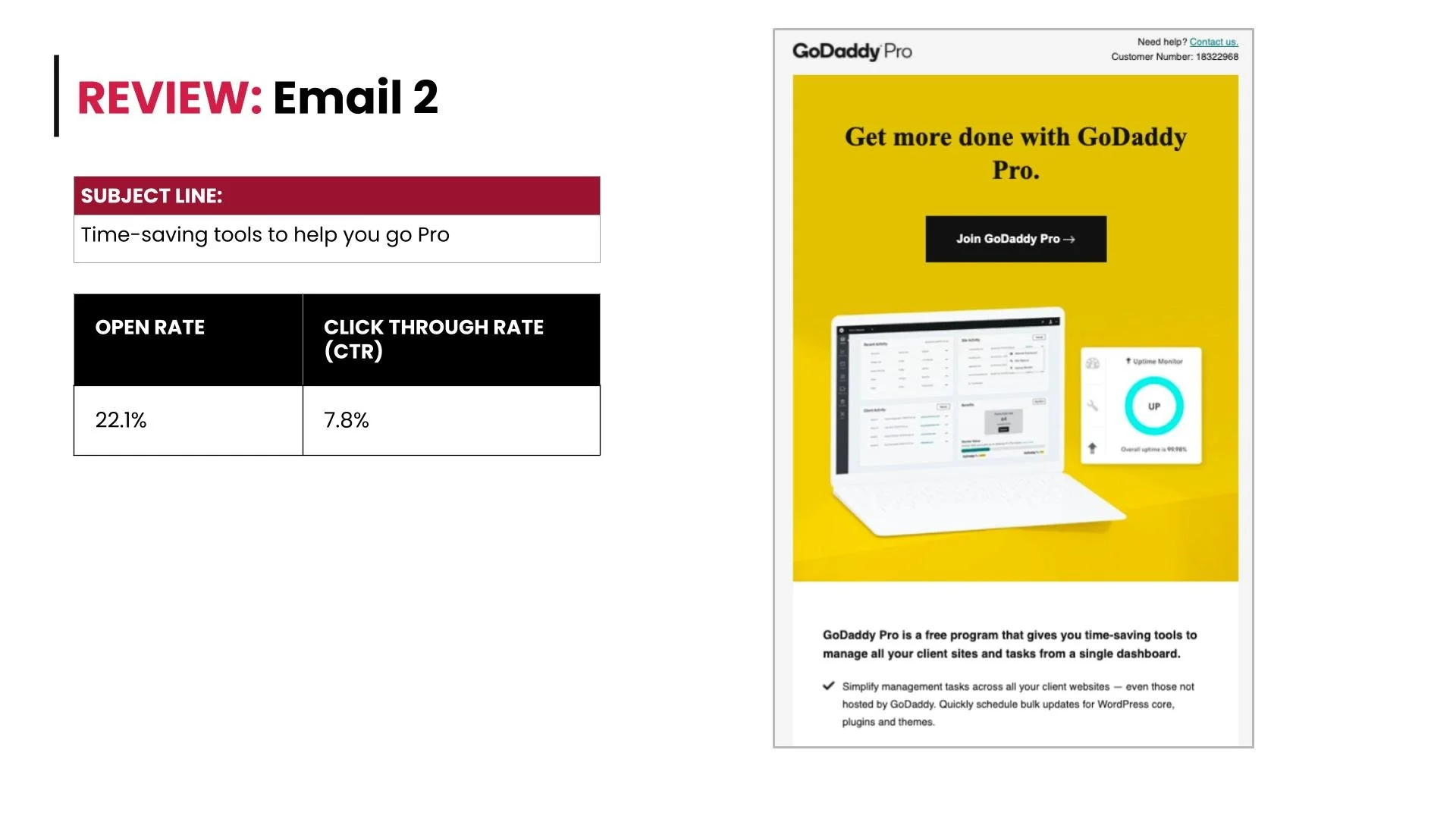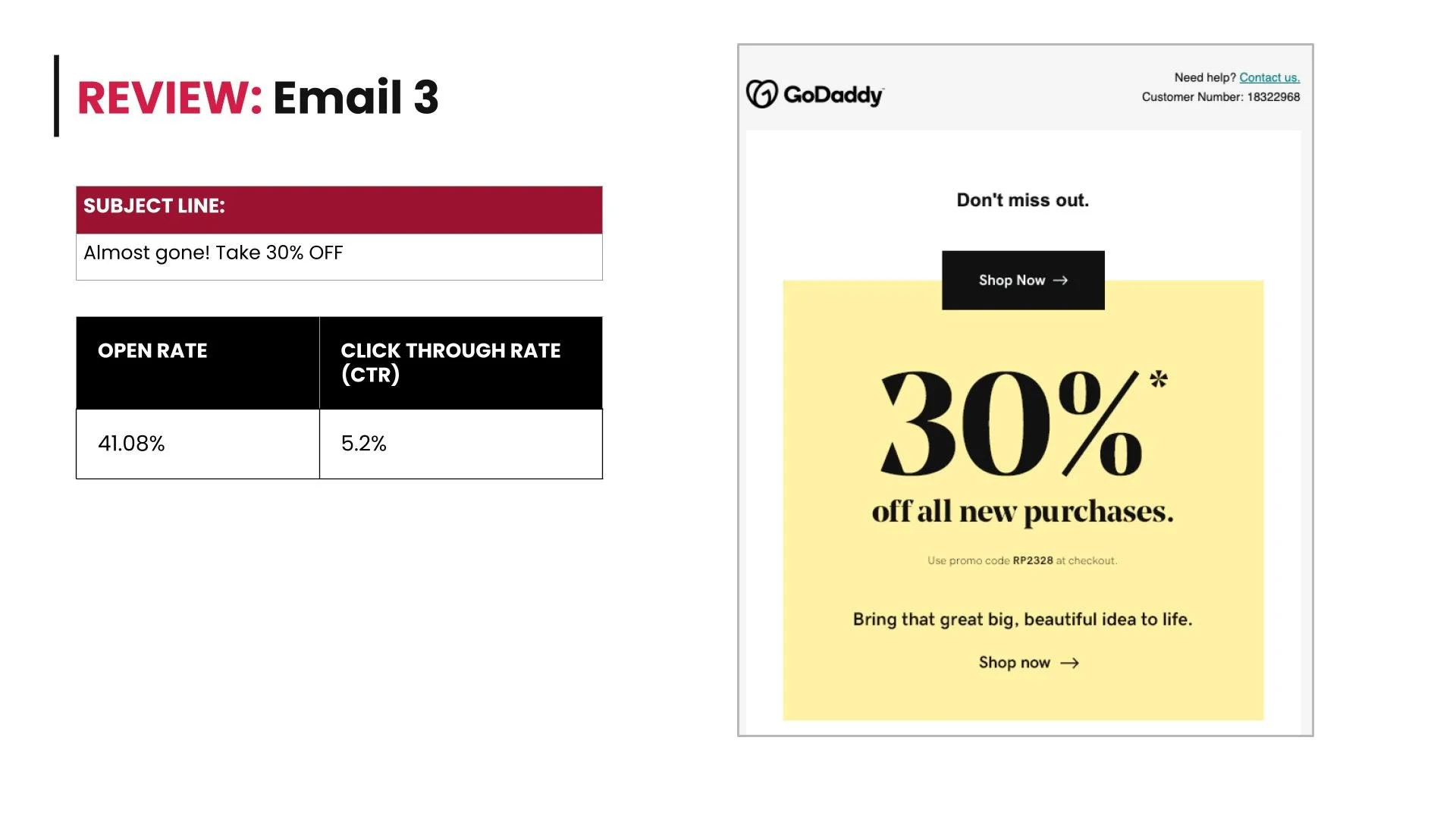
Digital Marketing Foundations: My 2025 Course Studies
A comprehensive overview of the strategies and tools I'm mastering for the evolving digital landscape.
Meta Ad Campaign: Messaging, Visuals & Conventions
This project showcases how I developed a structured Facebook ad campaign for GoDaddy, tailored to a defined target audience of women entrepreneurs. As part of my digital marketing training, I created ad copy, selected visuals, and applied a clear naming convention strategy to improve tracking and collaboration.
Key components include:
Campaign and ad set naming aligned with objective and audience
Clear, descriptive ad names for long-term campaign clarity
Visual content tailored to resonate with the audience persona
Strategic copywriting focused on conversion and brand alignment
Ad structure designed for scalability and easy performance review
This section highlights my ability to create compelling social ad content while applying best practices for naming, organization, and long-term campaign management.
Defining Core Content Pillars for Consistent, Purpose-Driven Messaging
To effectively guide a new customer through their journey, we must understand their needs, nurture trust, and deliver content that leads them from awareness to conversion.
For this assignment, I was tasked by GoDaddy.com to map out a full customer journey for an ideal client represented by the persona “Jesse Jones.” I analyzed Jesse’s demographics, behaviors, and key pain points to develop a content strategy that supports his decision-making process from start to finish.
This project includes:
Defined content pillars based on Jesse’s values, needs, and motivations
A breakdown of the most effective content channels for each stage of the journey (e.g., blog, email, social)
Suggested metrics to track performance, including engagement, click-through rates, and conversion indicators
By aligning each touchpoint with Jesse’s goals, this content playbook ensures that GoDaddy’s messaging remains purposeful, personalized, and conversion-focused throughout the customer lifecycle.
Email Campaign Analysis: Turning Open Rates Into Action
This project focused on analyzing and optimizing an email campaign using key performance metrics such as open rate, click-through rate (CTR), and engagement behavior. The objective was to improve campaign outcomes by identifying areas of friction and applying data-informed content adjustments.
Working within the framework of a fictional campaign for GoDaddy.com, I:
Reviewed email analytics to assess subject line effectiveness, link placement, and CTA clarity
Made copy and layout refinements to boost engagement
Suggested A/B testing strategies for future sends
Aligned the revised messaging with user intent and stage in the customer journey
Applied HubSpot Email Marketing best practices, including list segmentation and personalization
The final recommendations provided a roadmap for increasing conversions through data-driven content strategy, showcasing my ability to blend creative writing with performance analysis.
Driving Discoverability: A Strategic SEO Audit for GoDaddy
This SEO audit was conducted as part of a digital marketing strategy assignment for GoDaddy.com, focused on identifying opportunities to improve visibility, search performance, and user experience across both on-site and off-site channels.
Using tools like SEMrush and Ubersuggest, I assessed:
On-page SEO elements: meta tags, headers, internal linking, keyword usage, and content quality
Technical SEO performance: page speed, mobile responsiveness, crawlability, and site architecture
Off-page SEO signals: backlink profile quality, domain authority, and brand visibility across social platforms
Social media audit: Evaluated engagement, consistency, and optimization of GoDaddy’s content on platforms like Instagram, Twitter, and LinkedIn, identifying areas to boost authority and traffic referral
The report concludes with actionable recommendations to strengthen search rankings, improve content discoverability, and align GoDaddy’s digital footprint with user intent.
HubSpot Automation: From Form Fill to Follow-Up
This project demonstrates how I used HubSpot to build a simple yet effective lead generation and email automation workflow. As part of my digital marketing coursework, I created a custom lead capture form and connected it to an automated email sequence designed to welcome, engage, and guide new subscribers toward conversion.
Key components include:
A custom HubSpot form embedded on a landing page
An automated email workflow triggered upon form submission
Smart timing and segmentation to deliver the right message at the right time
A focus on user experience and engagement, using personalized subject lines and value-driven content
This project highlights my ability to use marketing automation tools to streamline lead generation and build relationships at scale.















